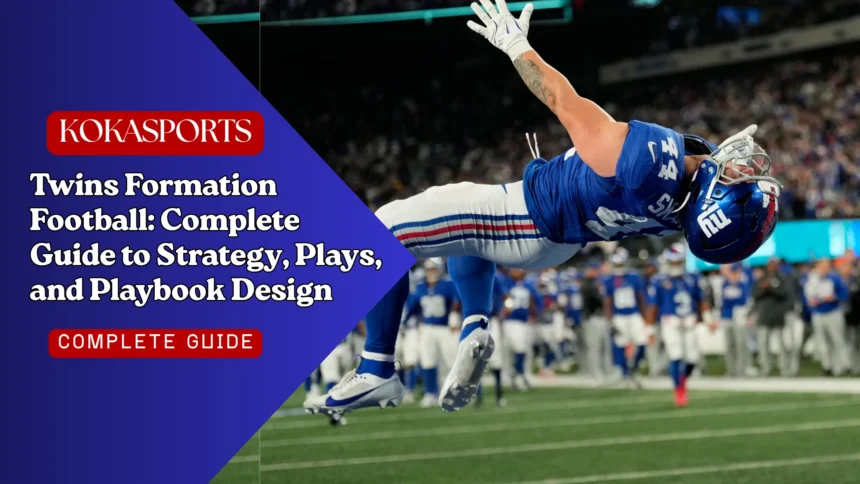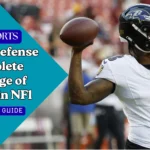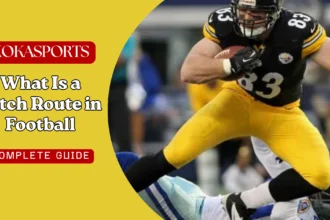Introduction to Twins Formation Football
The twins formation represents one of the most versatile and effective offensive formations in modern American football. This strategic alignment has become a cornerstone for football coaches at every level, from youth flag football to professional NFL competition. Understanding the twins formation opens doors to countless strategic possibilities that can transform your offensive game plan.
At its core, the twins formation places two receivers on the same side of the formation, creating immediate advantages against defensive alignments. This simple yet powerful concept has evolved significantly since its early days, becoming a staple in offensive football systems across college football and professional leagues. The beauty of this football formation lies in its flexibility it works equally well in traditional pro-style offenses and modern spread formation schemes.
The popularity of twins formation stems from its ability to create confusion for defenses while maintaining balance in the run game. Unlike more exotic alignments like the bunch formation where receivers line up extremely close together, or the trips formation that stacks three players on one side, the twins formation offers optimal spacing that forces defenses to make difficult coverage decisions. Whether you’re designing flag football plays for 5v5 competitions or installing professional-level concepts, the twins formation provides the foundation for explosive offensive success.
Basics of Football Formations
Before diving deep into twins-specific concepts, it’s essential to understand how formations function within the broader context of offensive formations. A formation in football refers to how offensive players align themselves relative to the line of scrimmage before the snap. These alignments dictate blocking assignments, route concepts, and ultimately determine what the quarterback can accomplish with each play call.
Traditional formations like the I formation and single back formation featured more balanced alignments with tight ends and multiple running backs. Modern football has evolved toward spread concepts that emphasize space and matchup advantages. The twins formation bridges these philosophies perfectly—it can function within a traditional pro-style offense or serve as the foundation for tempo-based spread attacks.
Key elements that define any formation include:
- Position of the offensive line (typically five players: two offensive tackles, two guards, and a center)
- Location of the running back or halfback (back in the backfield or split wide)
- Placement of receivers relative to the line of scrimmage
- Alignment of tight ends (if present)
- Distance from the sideline and spacing between players
The twins formation specifically creates two sets of twins by placing receivers on either side in paired alignments, though the most common version features twins on one side with a single receiver on the opposite. This asymmetrical look gives the offense tremendous flexibility while maintaining the ability to run the ball effectively.
Read More: How Long Is Each Quarter in Football? Ultimate Guide to Football Game Length and Timing
Twins Formation Football Explained

The standard twins formation aligns two receivers on one side of the center—let’s call it the right side of the formation—while placing a final receiver on the opposite side. Behind the quarterback, you’ll typically find one running back positioned as a blocker or ball carrier option. The offensive line maintains its traditional spacing, with five offensive linemen providing protection and creating running lanes.
Basic Twins Formation Alignment:
| Position | Location | Role |
|---|---|---|
| Quarterback | Under center or shotgun | Commands the offense, reads defense |
| Running Back | Behind the quarterback | Carries ball, pass protection |
| Left Tackle | Left tackle position | Protects blind side |
| Guards/Center | Interior offensive line | Run blocking, pass protection |
| Right Tackle | Right side | Edge protection |
| Twin Receivers | Either side of the center (usually right) | Create spacing, run routes |
| Single Receiver | Receiver on the opposite side | Backside option, prevents overload |
The twins stack formation represents an advanced variation where the two receivers align in a stacked position one directly behind the other rather than side by side. This adjustment creates even more confusion for defenses because it disguises route intentions and makes press coverage nearly impossible.
Strengths of the twins formation include:
- Forces the defense to declare coverage strength before the snap
- Creates natural spacing for quick passing game
- Provides excellent platform for running plays toward or away from twins side
- Allows easy motion adjustments to create numbers advantage
- Works seamlessly in no-huddle tempo situations
The formation’s primary weakness emerges against defenses that successfully match personnel and coverage. However, savvy offensive coaches can counter these adjustments through motion, shifts, and play-action concepts that keep defenders guessing.
Twins Formation Football Plays

Effective football plays from the twins formation leverage both the passing and running game to keep defenses off balance. The beauty of this alignment lies in its versatility—you can attack downfield, work the short game, or pound the ball with power runs.
Essential Run Game Concepts:
The inside zone represents the foundation of any twins formation run game. The running back reads the defensive line and follows the offensive line to the point of attack. When twins are aligned to one side, defenses often shift their linebacker strength, creating potential running lanes away from the formation strength. Power and counter plays also work exceptionally well, using the tight end (when present) as a lead blocker to create displacement at the point of attack.
Jet sweep and running plays utilizing motion add another dimension. By sending a receiver in motion from the twins side, you can stretch the defense horizontally and create edge opportunities. The tackle becomes crucial in sealing the edge, while the receiver transforms into a ball carrier who can get open in space.
Core Passing Concepts:
The slant-flat combination attacks man coverage and zone defenses equally. The inside receiver runs a quick slant across the line of scrimmage, while the outside receiver executes a flat route toward the sideline. This two-man concept creates natural spacing that forces defenses to make difficult choices.
Vertical concepts push the ball downfield by sending three receivers on coordinated routes at different levels. Against two tight ends looks on defense, these vertical stretches create massive opportunities for explosive plays. The quarterback reads the coverage and delivers to the open receiver based on leverage and spacing.
Bubble screens and quick game passes exploit aggressive defenses. When defenders crowd the line of scrimmage, the bubble screen allows the receiver to carry the ball immediately with blockers in front. These plays work exceptionally well in youth football and youth football online learning environments because they’re simple to execute yet highly effective.
Pro Twins Formation Football and Advanced Strategy
Professional teams elevate twins formation concepts through precision timing, sophisticated route adjustments, and integration with other offensive formations. The NFL flag football and traditional NFL both showcase how elite quarterbacks and receivers maximize this alignment’s potential.
Advanced professional concepts include:
- Route combinations that create coverage conflicts at multiple levels
- Pre-snap motion to identify coverage and create matchup advantages
- RPO (Run-Pass Option) integration where the quarterback decides between run the ball or throw based on defensive reactions
- Tempo variations that prevent defensive substitutions
- Formations with unbalanced looks that combine twins with an unbalanced line or unbalanced formation
Professional offensive coaches also understand how to sequence plays from identical formations. By running diverse football plays from the same alignment, they prevent defenses from keying on specific tendencies. This approach works whether you’re using a traditional pro twins look or the modern spread formation variation.
The complete guide to professional twins concepts involves understanding how players on the line adjust their splits, how motion creates automatic reads, and how the quarterback processes post-snap information within 2-3 seconds of receiving the snap.
Creating Your Twins Formation Playbook

Building an effective playbook centered on twins concepts requires systematic organization and clear communication. Whether you’re coaching youth football online or developing concepts for advanced competition, your playbook should provide crystal-clear guidance.
Essential Playbook Elements:
- Formation diagrams showing exact alignment for every position
- Terminology system that’s easy for football players to memorize
- Blocking rules for offensive linemen on every play
- Route trees showing options for eligible receivers
- Adjustment protocols based on defensive alignment
Your playbooks should include base plays that work against any coverage, plus specialized concepts for specific defensive looks. Start with 8-10 core plays that attack different spots on the field, then add wrinkles and variations as players master fundamentals.
For youth flag football and beginning programs, simplicity reigns supreme. Focus on spacing, timing, and getting players to get open through proper route execution. Advanced programs can layer in coverage adjustments and option routes where receivers change their path based on defensive leverage.
Defensive Adjustments and Counter Strategies
How defenses respond to twins formations allows you to exploit their adjustments. Most defenses will shift their strength bringing an extra linebacker or safety toward the twins side. This creates opportunities on the backside with your single receiver against potentially favorable matchups.
Common defensive responses include rolling coverage to the twins side, playing man coverage with help over the top, or maintaining balanced two-man coverage shells. Each approach creates specific vulnerabilities that smart offensive coaches can attack. When defenses overcommit to stopping the passing game, the run game becomes your primary weapon. Conversely, when they load the box, quick passing concepts and screens neutralize their aggression.
The formation with two receivers on one side fundamentally forces defenses to make choices. They cannot defend everything perfectly, and your job is identifying which area they’ve left vulnerable. This chess match between offense and defense makes twins formation one of the most intellectually engaging aspects of the football game.
Conclusion:
The twins formation remains essential in modern football because it balances simplicity with strategic depth. From youth flag competitions to professional play, this alignment creates spacing, generates favorable matchups, and maintains run-pass balance.
Whether implementing basic concepts or sophisticated four-receiver variations, twins formation offers endless possibilities. It complements traditional approaches or anchors spread offenses. By mastering its principles from alignment to route combinations you’ll unlock offensive potential that transforms team performance.
The formation stays relevant by creating numerical advantages, forcing difficult defensive decisions, and enabling both explosive plays and controlled drives at any competitive level.
FAQs
What is twin formation in football?
The twins formation places two receivers on the same side of the formation to create spacing advantages and force defensive adjustments.
Which formation is best in football?
There’s no single “best” formation the most effective choice depends on your personnel, opponent’s defense, and game situation.
What is a 2 TE set called?
A formation with two tight ends is commonly called “12 personnel” or simply a “two tight end set.”
What is shotgun formation in football?
The shotgun formation positions the quarterback 5-7 yards behind the center to receive a longer snap, providing better vision and more time to pass.




